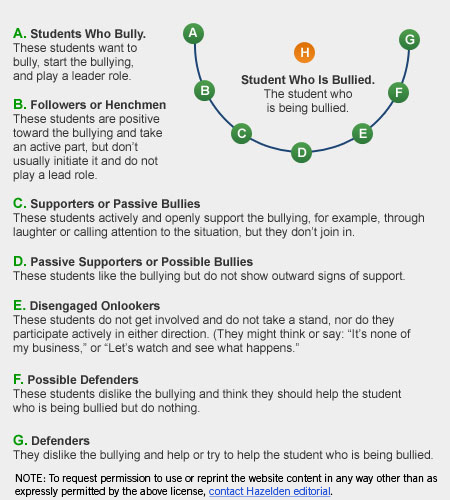 Every October, schools and organizations around the nation take part in National Bullying Prevention Month. They join the movement with the goal of encouraging communities to work together to stop bullying and cyberbullying. The hope is to prevent bullying and cyberbullying with a heightened awareness of the effect of bullying on victims of all ages.
Every October, schools and organizations around the nation take part in National Bullying Prevention Month. They join the movement with the goal of encouraging communities to work together to stop bullying and cyberbullying. The hope is to prevent bullying and cyberbullying with a heightened awareness of the effect of bullying on victims of all ages.
In my travels over the past few weeks, I have seen evidence of increased interest in addressing this very difficult problem in our schools.
Bullying is often a spectator sport, and one of the most devastating social issues we face in our schools today. The culture that supports bullying is widespread and challenging to address and the consequences of not changing this culture can be destructive for both individuals and the entire school or district.
Typically, bullies like an audience. This audience can be differentiated by where they stand on whether they support the bully or side with the victim. In a culture where bullying is rampant, those providing direct support of the bully or direct defense of the victim are often in the minority. A large proportion of the onlookers fall in the middle, neither actively supporting or defending. Bullying prevention programs based on creating systemic change seek to shift these uninvolved onlookers toward the defender end of the spectrum.

Systemic bullying prevention programs are designed to change the culture of a school by focusing on messaging and activities throughout the school year. Olweus is one of the most successful of these systemic programs. With intensive staff training, agreed upon guidelines, uniform discplinary responses, school mapping, and class meetings that matter, the Olweus Bullying Prevention Program seeks to establish a new culture within the school where everyone understands that bullying will not be tolerated. For more information on Olweus, please contact Mike Stamper, School Safety Program Coordinator at NWESD.
Changing the bullying cycle for students, however, is only part of an effective response to a culture that supports this behavior. Our schools also need to be vigilant and to work to prevent workplace harassment and bullying. Often overlooked, harassment of adult staff by other adults can lead to confusion for students being told to change their behavior. There is a national movement to create protections for adults who are bullied in the workplace.
Victims of bullying and those who wish to defend them, should keep the following key strategies in mind. Always document any incident of bullying, whether you are a victim or a witness. Jot down who, what, when, and where the incident took place. Report the incident to a trusted adult or supervisor. Stand up for those who are victims and encourage others to do so as well.
-Ed



